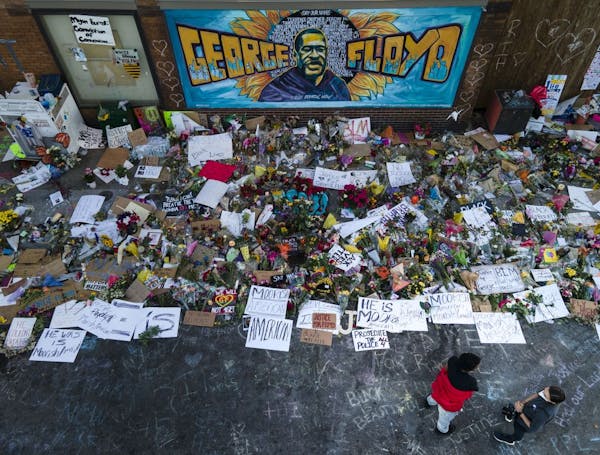On the morning of May 26, Minneapolis police spokesman John Elder sent a brief statement to reporters under the subject line: "Man Dies After Medical Incident During Police Interaction."
According to Elder, a suspected money forger had "physically resisted" arrest. And after police managed to get him into handcuffs, the officers "noted he appeared to be suffering medical distress."
The man was George Floyd. And a source of the medical distress was the knee of a Minneapolis police officer, pinning Floyd to the ground by the neck almost eight minutes as Floyd pleaded that he couldn't breathe — all details that emerged hours later when bystander video surfaced online and went viral.
The statement came hours before the first video of the encounter went viral — the moment they lost control of the narrative, and the public took over. Some city politicians, including Council Member Jeremy Schroeder, say they are still searching for answers as to the source of the false information.
"It is deeply concerning that the information initially circulated by the Minneapolis Police Department early Tuesday morning did not fully reflect the horrifying circumstances surrounding George Floyd's death," said Schroeder. "The original news release did not in my view accurately convey the facts or the role of the officers in this tragedy."
Minneapolis Police Chief Medaria Arradondo said this week that he did not know the original source of the information contained in the news release.
"I'm committed as we move forward that we will do better to make sure we are getting as much factual information out in a timely matter as we can."
Elder said in an interview late Tuesday night that when he goes to a scene, information is fluid and the officers involved can't be interviewed by a public information officer.
"We try very hard to get information out as quickly as possible that is wholly honest and correct," he said. "There is no way I'm going to lie about a situation that is on body camera and is going to prove this department to be disingenuous."
The most credible accounts of what happened that night came from bystander video and private surveillance footage, later supplemented by a criminal complaint. Minneapolis officers arrived at the intersection of 38th Street and S. Chicago Avenue. They removed Floyd from a vehicle, handcuffed him and walked him across the street. While they attempted to get him into a squad car he went to the ground. A bystander video then shows officer Derek Chauvin pinning down Floyd by his neck while two other officers, J Alexander Keung and Thomas Lane, hold him down at his legs and back. Officer Tou Thao stands by.
"Please, I can't breathe," Floyd pleads repeatedly.
"He is human, bro," bystanders shout at the officers. "He's not even resisting arrest right now, bro. You're [expletive] stopping his breathing right now, bro. You think that's cool?"
"Look at him," another cries as Floyd becomes unresponsive.
After seeing the video, city leaders quickly condemned the police actions and Arradondo fired the officers. Protests have erupted across the Twin Cities, culminating Thursday night with crowds breaking into the Third Precinct police headquarters and lighting it on fire. Chauvin has been arrested and charged with third-degree murder and manslaughter.
Mary Moriarty, chief public defender in Hennepin County, said her office frequently deals with cases where Minneapolis police officers provide official accounts of arrests later proven to be false by video evidence.
"Am I at all surprised that the police lied in their report? No," she said.
Moriarty also said she wasn't surprised to see Chauvin pinning down Floyd in what city officials have criticized as an unsanctioned form of restraint.
"We look at bodycam, we look at dashcam, and we frequently see officers put their knees in a client's back or neck," she said. "And it is troubling. It's extremely troubling."

Racist slur on pedestrian bridge in Rochester prompts investigation
Police recover 124 cats from Crystal home; woman charged with felony animal mistreatment
Spring's hot gift book features gorgeous found-nature photos
Victim in north Minneapolis shooting identified as man from Chicago

